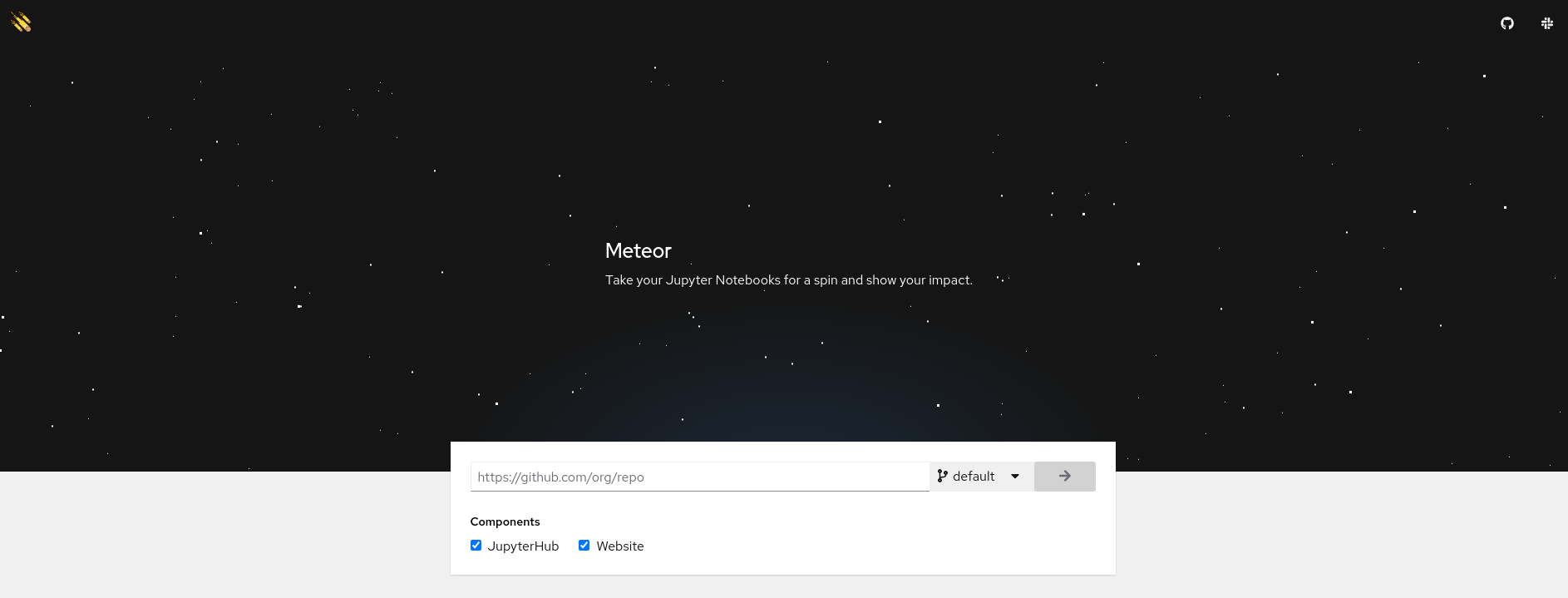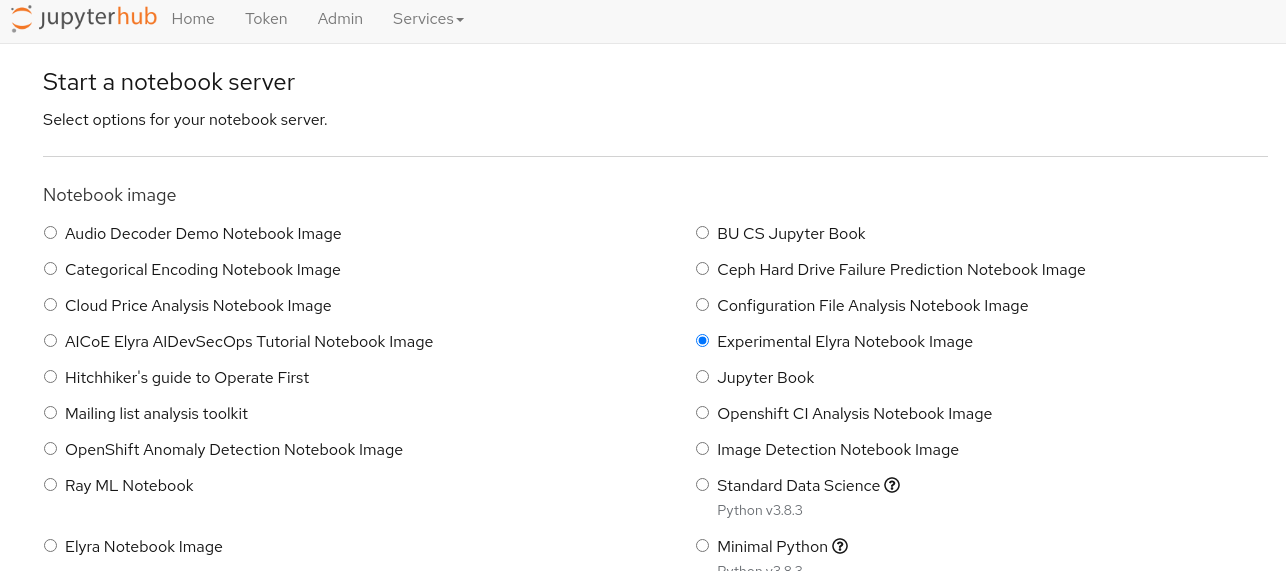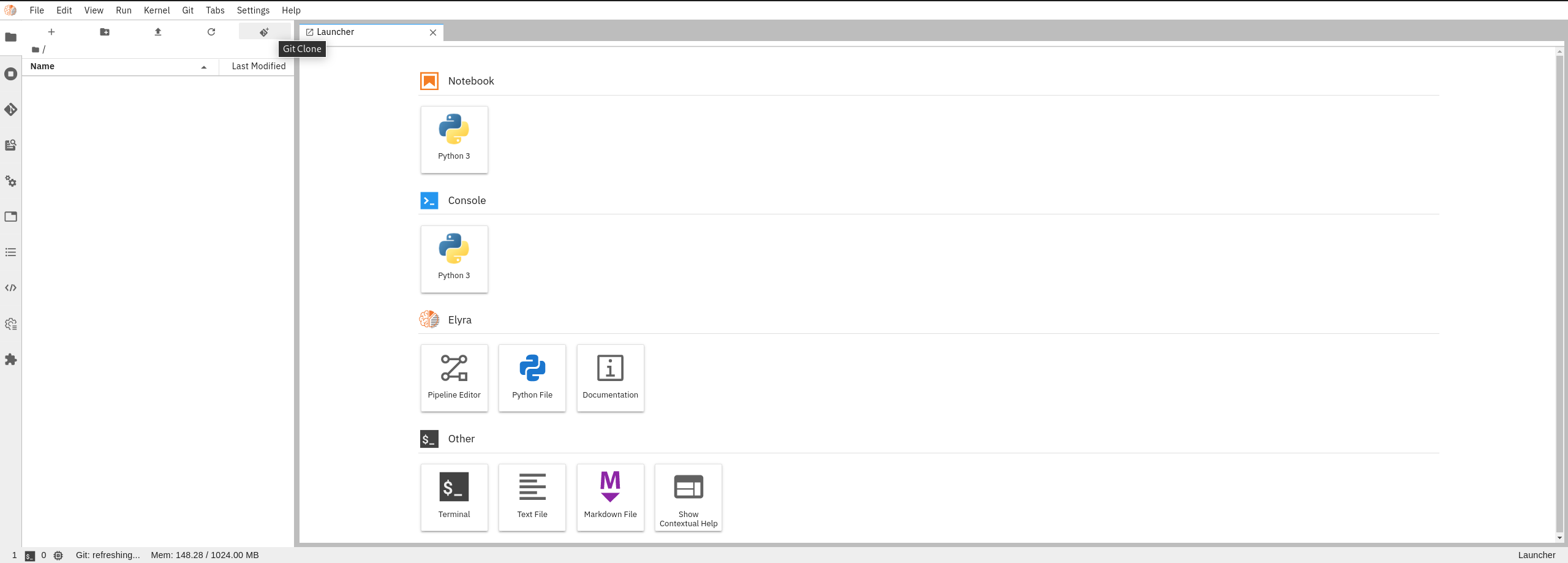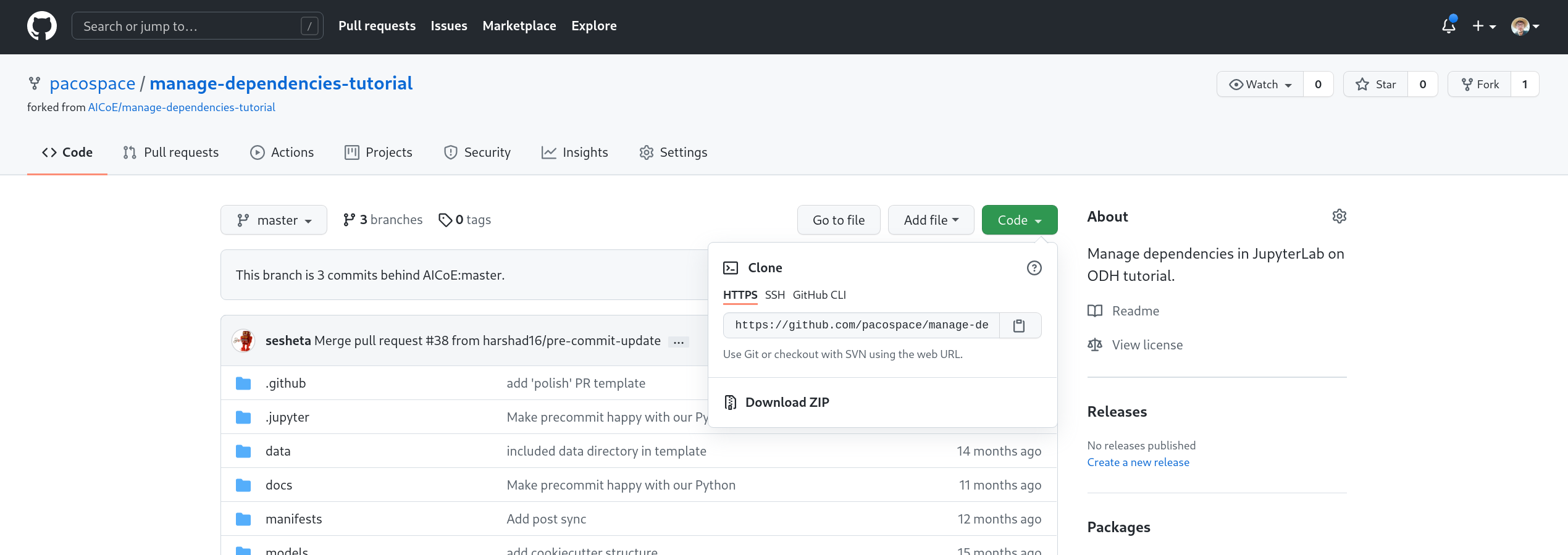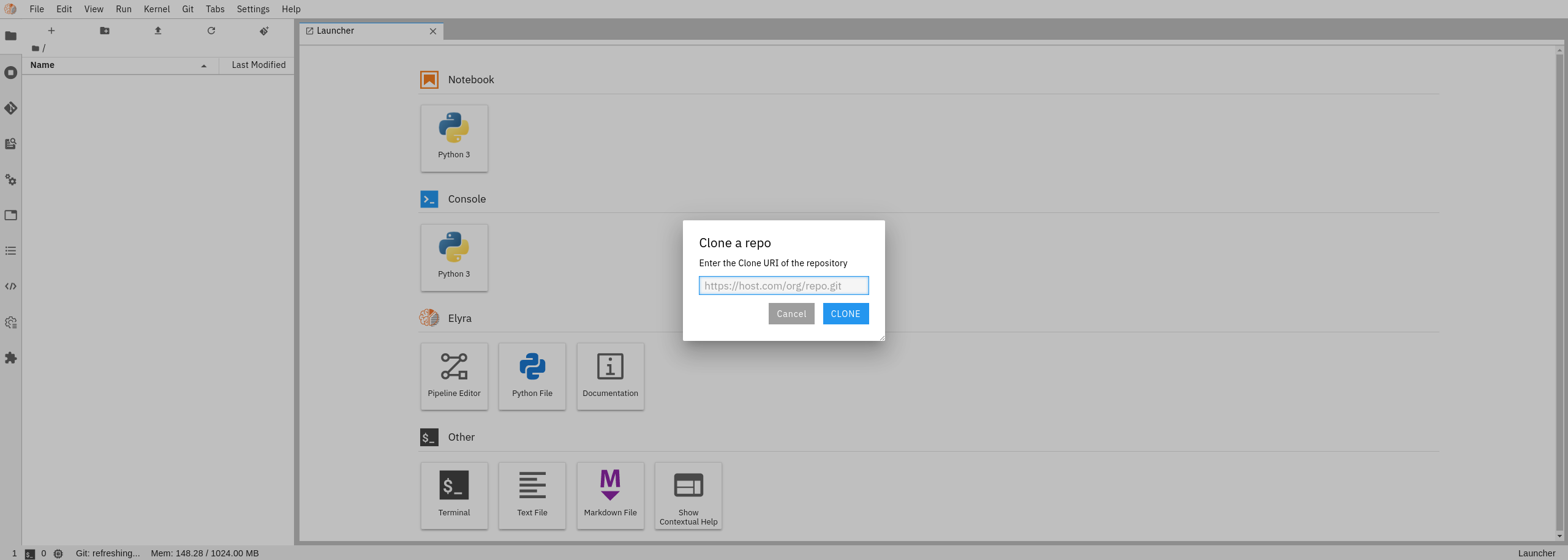The environment that will be used for this tutorial is an open environment with open source technologies running on Red Hat Openshift on an open infrastructure with an open community that allow developers and operators to collaborate and learn from each other, called Operate First. Operate First hosts Open Data Hub with all the tools provided for Data Science projects (e.g. JupyterHub, Elyra, Kubeflow Pipelines, Seldon, Prometheus, Grafana, Superset) running on Red Hat Openshift.
To begin, you'll need to fork this repository to create your own copy. If you're unsure how, look at Fork a Repo from GitHub docs.
-
Use Project Meteor (suggested way);
-
Use JupyterHub;
-
Use a container image locally.
Project Meteor is a combined effort across the AICoE team at Red Hat, to provide a single tool for data scientists and other users where they can interact with, explore and leverage all of our services, tools and technologies for developing intelligent applications. Project Meteor is deployed on Operate First and you can use it following this link
- Enter the URL to your Git repository in Meteor.
Project Meteor on the background will create two images for you:
-
JupyterBook where you can view easily shareable, and rendered high-quality static content from experiment.
-
A live JupyterLab environment where you can interact with your project and run your experiments.
You can track errors and status of the pipelines using the Show details link:
Once everything is ready, you can access the image to run the tutorial using Open as JupyterHub link on the bottom, while you can access the JupyterBook using Open as Website link on the bottom.
Now you are all set to start the tutorial.
In order to access the JupyterHub from Open Data Hub deployed on the Operate First cluster:
-
Click this link to visit the Operate First JupyterHub.
-
Select the image called
Experimental Elyra Notebook Imagefrom the JupyterHub spawner. -
Select
Largefor container size.
Once your image is ready and you are in the Jupyterlab UI, you can use the Git extension provided to clone this repo.
-
Click the Git extension button from Jupyterlab UI:
-
Take HTTPS link of the GitHub repo you want to clone, for this tutorial use your forked one from this repo:
-
Insert the link taken from your forked repo in the JupyterLab Git Extension: e.g.
https://github.com/AICoE/manage-dependencies-tutorial.git
PRE-REQUISITE: Make sure you have podman installed:
- Run the following command:
podman run -p 8888:8888 quay.io/thoth-station/manage-dependencies-tutorial:latest start-singleuser.sh --ip="0.0.0.0" --port=8888
